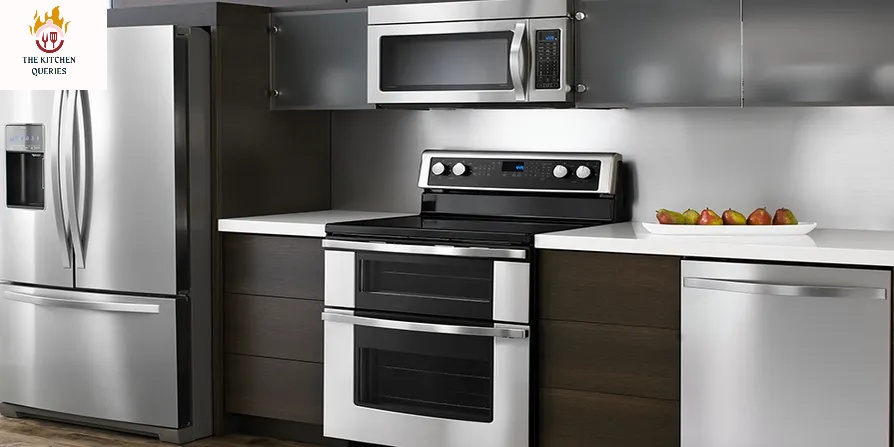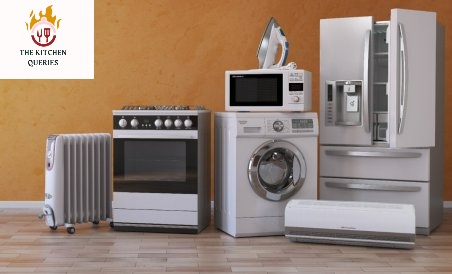The Kitchen is often considered the heart of a home, so it is important to maintain its functionality and aesthetic appeal.
One way to do this is by investing in kitchen appliances, which can significantly enhance the cooking and dining experience.
However, determining whether these appliances qualify as capital improvements can be confusing.
This article will explore what constitutes a capital improvement and examine whether kitchen appliances fit the definition.
By the end, you will clearly understand the difference between capital improvements and routine maintenance.
You will be better equipped to make informed decisions about your kitchen and its expenses.
What Is a Capital Improvement?

Capital Improvement is an expenditure made by a business or government entity to improve its physical assets, such as buildings, equipment, or infrastructure, to increase their value or extend their useful life.
These improvements are typically intended to enhance the asset’s functionality, efficiency, safety, or aesthetics and are usually considered long-term investments.
Capital improvements can include renovations, repairs, replacements, or new construction and may require significant funding and implementation planning.
They are distinguished from routine maintenance or operating expenses, typically ongoing costs required to keep assets in good working order.
Is A Dishwasher A Capital Improvement?

Whether a dishwasher is considered a capital improvement depends on the specific circumstances.
Generally, if the dishwasher replaces an old or non-functional unit, it can be considered a capital improvement.
This is because the new dishwasher is enhancing the value of the kitchen and is expected to last for a significant period, usually several years.
However, if the dishwasher is installed in a brand-new kitchen or as part of routine maintenance, it is not usually considered a capital improvement.
In these cases, the dishwasher is simply replacing an existing item or fulfilling a basic need rather than adding significant value or extending the asset’s useful life.
Capital Improvement & Routine Maintenance:
It’s worth noting that the distinction between capital improvement and routine maintenance can have important tax and accounting implications.
Capital improvements are generally depreciated over several years, while routine maintenance expenses are usually expensed in the current year.
As such, it’s important to consult with a tax professional or accountant to determine the appropriate classification for your specific situation.
Capital Improvements And Tax Deduction:

Capital improvements are typically not fully tax-deductible in the year they are made.
Instead, the improvement cost is usually depreciated over the years, which means the cost is spread out over the asset’s useful life.
The depreciation schedule determines the amount that can be deducted each year based on the type of asset and the method of depreciation used.
Generally, buildings and other real estate assets are depreciated over a longer period than equipment or machinery.
It’s important to note that some capital improvements may qualify for additional tax benefits, such as energy-efficient upgrades or improvements made for accessibility purposes.
These may be eligible for tax credits or deductions beyond the standard depreciation schedule.
It’s always a good idea to consult with a tax professional or accountant to determine the specific tax implications of any capital improvements you plan to make, as the rules and regulations can be complex and vary depending on the type of asset and the circumstances of the improvement.
Do New Appliances Count As Capital Improvements?

New appliances can be considered capital improvements if they meet specific criteria.
Generally, an appliance can be classified as a capital improvement if it enhances the value or extends the useful life of the asset it is replacing.
This means that if a new appliance replaces an old, worn-out, or outdated unit, it can be considered a capital improvement.
However, suppose the appliance is simply a replacement for an existing unit still in good working condition or installed as part of routine maintenance or repairs.
In that case, it is not considered a capital improvement.
It’s also worth noting that the cost of the appliance is a factor in determining whether it qualifies as a capital improvement.
If the cost of the appliance is high and represents a substantial investment in the asset, it is more likely to be considered a capital improvement.
On the other hand, if the cost is relatively small, it may not qualify as a capital improvement.
Financing Capital Improvements:
Items that are considered capital improvements are those that enhance the value or extend the useful life of a business or investment property.
Examples of capital improvements can include:
1. Structural improvements:
Improvements made to the building’s structure, such as a new roof, foundation work, or major renovations.
2. Equipment and machinery:
Major purchases of equipment or machinery that increase productivity or efficiency, such as a new printing press or computer system.
3. Landscaping and outdoor improvements:
Enhancements to the property’s exterior, such as new sidewalks, landscaping, or lighting.
4. Building systems upgrades:
Upgrades to the electrical, plumbing, or HVAC systems of a building.
5. Energy-efficient upgrades:
Improvements that reduce energy consumption, such as solar panels, insulation, or energy-efficient lighting.
6. Safety and security upgrades:
Improvements that enhance the safety and security of a property, such as fire alarm systems, sprinklers, or security cameras.
Side Note:
It’s important to note that not all improvements or repairs are considered capital improvements.
Routine maintenance, repairs, and minor upgrades are typically not considered capital improvements, as they do not significantly increase the value or extend the useful life of the property.
Capital Improvement Fee:

A capital improvement fee is a fee charged by a local government or other organization to fund capital improvements to infrastructure, facilities, or other public assets.
These fees are typically charged to developers or property owners to offset the costs of new construction or development.
A capital improvement fee aims to ensure that the costs of new development or construction are borne by those who will benefit from the resulting improvements to the community.
For example, a developer who builds a new housing development may be required to pay a capital improvement fee to fund improvements to roads, water and sewer systems, or other public infrastructure needed to support the new development.
Capital improvement fees may also fund improvements to existing public assets, such as parks, libraries, or community centers.
Local ordinances or regulations typically set these fees and can vary depending on the project or development.
It’s worth noting that capital improvement fees differ from property taxes, which are generally used to fund ongoing maintenance and operations of public assets.
Capital improvement fees are typically one-time fees charged at the time of new development or construction and are intended to fund specific capital projects.
Video Guide:
Frequently Asked Questions (FAQs):
What Is a Capital Improvement Plan?
A capital improvement plan (CIP) is a comprehensive plan that outlines the proposed capital projects and infrastructure improvements for a city, county, or other governmental entity.
It typically covers several years and includes detailed information about each proposed project’s cost, timeline, and scope.
The CIP is used to guide decisions about budgeting and resource allocation and to ensure that the community’s infrastructure needs are met in a strategic and cost-effective manner.
What Is a Certificate of Capital Improvement?
A Certificate of Capital Improvement is a legal document that verifies a specific improvement made to a property is a capital improvement.
It is often required when seeking a tax deduction for the cost of the improvement and includes details such as the date, price, and description of the work done.
How Capital Improvement Works?
A capital improvement typically involves significant enhancements or additions to a property or infrastructure that extend its useful life or increase its value.
The cost of the improvement is usually spread out over its useful life through depreciation and may qualify for tax benefits.
Capital improvements are often planned and budgeted for in a capital improvement plan and may be funded through various sources such as grants, bonds, or fees.
Wrapping Up:
In conclusion, whether or not kitchen appliances are considered capital improvements depends on several factors, such as their cost, expected useful life, and impact on the property value.
While small, inexpensive appliances like toasters or blenders are generally not considered capital improvements, larger, more expensive appliances such as refrigerators or stoves may be considered capital improvements.
It’s important to consult with a tax professional or real estate expert to determine if a specific appliance qualifies as a capital improvement and if it is eligible for tax deductions.

I am a happy person. An adventurer. Currently wokring on different projects regarding SEO

